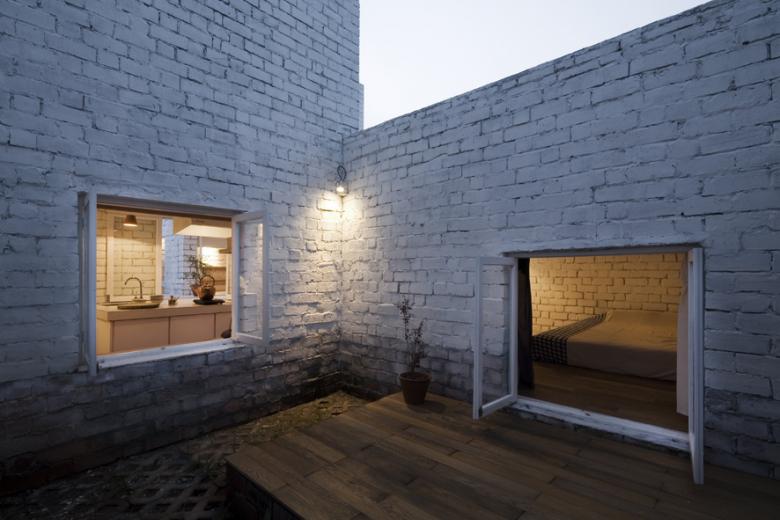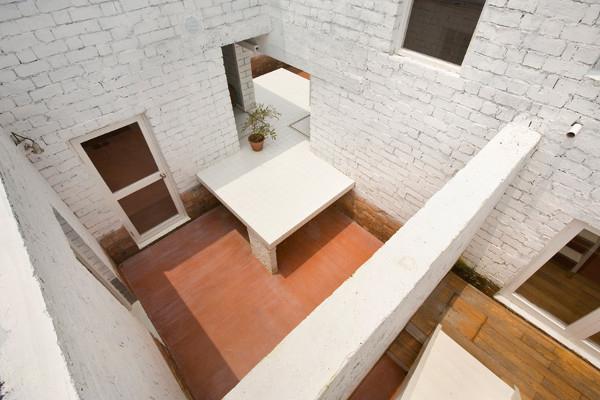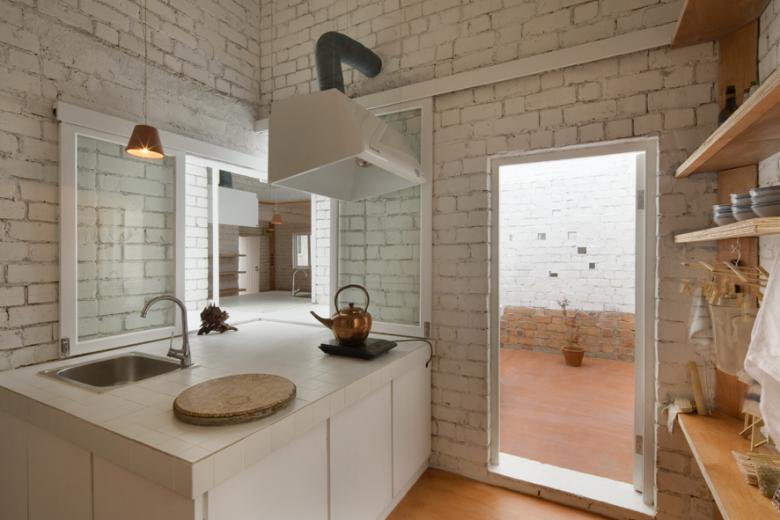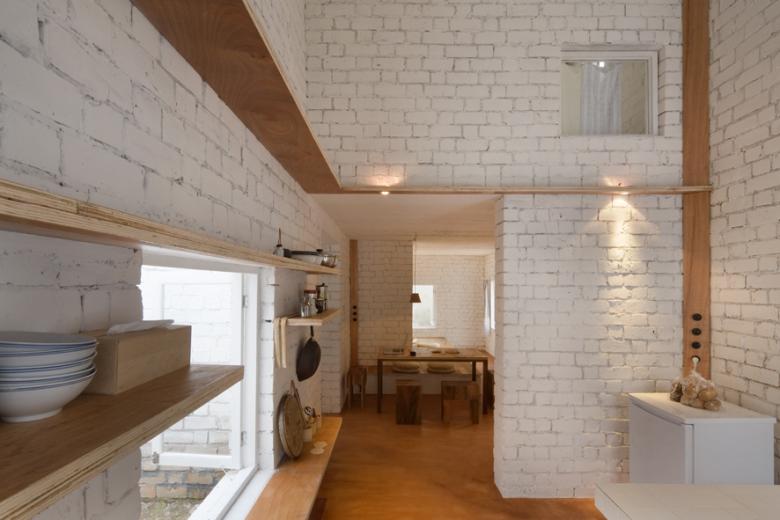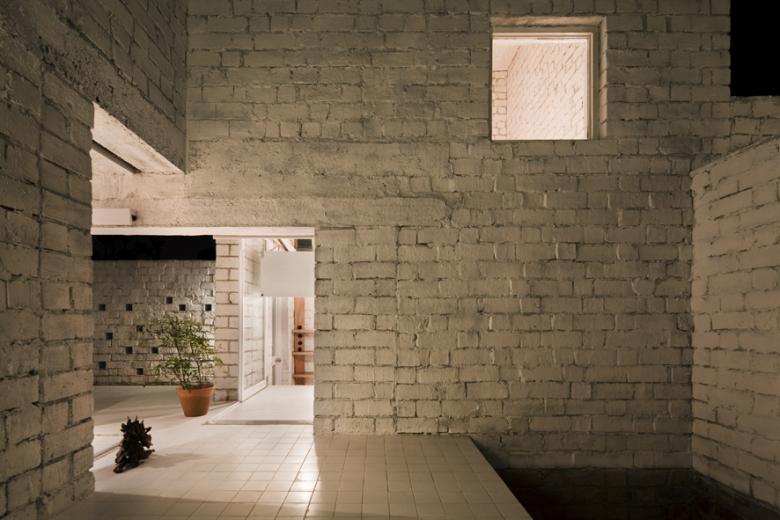Minus-K House
A Square in Space
22. September 2011
The international airport and the new deep-water port of Shanghai are located in the district of Nanhui, which is part of Pudong New Area. This suburban area with its huge infrastructure is the perfect place for production of export goods. Many factories are scattered across the former agricultural land. Everyone who lands at or takes off from the international airport looks from above on the patchwork of industrial production, infrastructure, old villages, drainage ditches and vegetable fields.
In this heterogeneous context with very different scales and functions, Satoko Saeki and Kok-Meng Tan of the Shanghai based firm KUU, designed a duplex composed of a normal dwelling for the family of a worker combined with a weekend house for the owner of a slipper factory in the compound of the firm's warehouse. The location seems already odd, and so does the program. The designers based their layout on 19 squares, each three by three meters, to form an irregular grid. At first sight, it is reminiscent of the Dutch structuralist movement of the 1960s, advocated by architects like Hermann Herzberger or Aldo van Eyck.
At second sight, one gets a clue of the specific Chinese cultural context for such an experiment. A shared table forms the centre of the duplex. Two kitchen squares and two courtyards are placed diagonally at each corner of the table, enabling the residents to face each other while cooking through an opening in the central cross of the walls.
The relationship between public/private, or better, collective/individual is challenged by such an arrangement of space. This recalls the experience normal Chinese people had until recently with shared kitchen, bathroom or communal courtyards and semi public collective neighbourhood streets. But in contrast to the forced arrangement by shortage of housing, in this case a choice is offered which creates an opportunity for communication in a cultured way.
In this concept the architects are interested in the creation of experience and the activation of behaviour, which is part of the collective memory. In this way the rigidity of the grid is used for the creation of possibility based on the specific local cultural background. With six double high units and five courts, the open and the closed cubes create a playful interaction between inside and outside, between vertical and horizontal.
Especially the horizontal orientation is of importance, because almost each of the squares is interconnected and allows views and a liberated feeling amidst the rigid square composition of the single elements. The functional arrangement and the rigidity of the basic layout creates a structure that can be used by each resident in a very personal way, but offers at the same time opportunities for communication or retreat by very simple means.
Simplicity could serve as another keyword for the formal expression and the use of material. All brick walls in the building are structural. To blur the notion of inside and outside, the walls are unplastered and have the same rough look in both locations. The red bricks and the ceiling made of concrete are simply painted white. A part of the floors and the furniture are made of wood, carefully designed, to fit into the space arrangement. Even the cotton curtains for the Minus-K House are designed by KUU with a variety of patterns and colours, made by local craftsmen and sewn by Chihoko, who is trained in making kimonos.
In contrast to the formal expressions usually found in the design of a private house – which is often used to showcase personal wealth –, this duplex is created with local handcraft and is rooted in the need of the residents. The recourse to a specific spatial experience offers an experimental way for a shared lifestyle between inside and outside and between neighbours, rooted in contemporary culture.
This building was awarded the 27th Shinkenchiku Award in 2011.
Eduard Kögel
Minus K House
2010
Nanhui, Shanghai
Architect
KUU
Shanghai
Floor Area
171 sqm
Photos
Jeremy San

